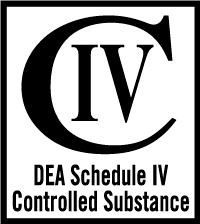- SOURCES
- U.S. Government Printing Office, Code of Federal Regulations, Title 21, Volume 9, Rev. April 1, 2002.

(a) Schedule IV shall consist of the drugs and other substances, by whatever official name, common or usual name, chemical name, or brand name designated, listed in this section. Each drug or substance has been assigned the DEA Controlled Substances Code Number set forth opposite it.
(b) Narcotic drugs. Unless specifically excepted or unless listed in another schedule, any material, compound, mixture, or preparation containing any of the following narcotic drugs, or their salts calculated as the free anhydrous base or alkaloid, in limited quantities as set forth below:
(c) Depressants. Unless specifically excepted or unless listed in another schedule, any material, compound, mixture, or preparation which contains any quantity of the following substances, including its salts, isomers, and salts of isomers whenever the existence of such salts, isomers, and salts of isomers is possible within the specific chemical designation:
(d) Fenfluramine. Any material, compound, mixture, or preparation which contains any quantity of the following substances, including its salts, isomers (whether optical, position, or geometric), and salts of such isomers, whenever the existence of such salts, isomers, and salts of isomers is possible:
(e) Stimulants. Unless specifically excepted or unless listed in another schedule, any material, compound, mixture, or preparation which contains any quantity of the following substances having a stimulant effect on the central nervous system, including its salts, isomers and salts of isomers:
(f) Other substances. Unless specifically excepted or unless listed in another schedule, any material, compound, mixture or preparation which contains any quantity of the following substances, including its salts:
A clinical study funded by the National Institutes of Health found amphetamines damage brain cells needed for cognitive speed and function. [More]
Like athletes who use steroids, students who use Adderall to enhance academic performance are in many ways victims. [More]
Although Vyvanse is referred to as “pro-drug” of dextroamphetamine, it's still an amphetamine, meaning that it's easily abused and can cause insomnia, agitation, anxiety and sometimes psychotic symptoms like seeing things or becoming paranoid. [More]
Most people may not know that Strattera (atomoxetine) appears to cause unsatisfactory sexual function (decreased libido, ejaculatory problems and impotence). [More]